Related Research Articles

Hydrographic survey is the science of measurement and description of features which affect maritime navigation, marine construction, dredging, offshore wind farms, offshore oil exploration and drilling and related activities. Surveys may also be conducted to determine the route of subsea cables such as telecommunications cables, cables associated with wind farms, and HVDC power cables. Strong emphasis is placed on soundings, shorelines, tides, currents, seabed and submerged obstructions that relate to the previously mentioned activities. The term hydrography is used synonymously to describe maritime cartography, which in the final stages of the hydrographic process uses the raw data collected through hydrographic survey into information usable by the end user.

An electrician is a tradesperson specializing in electrical wiring of buildings, transmission lines, stationary machines, and related equipment. Electricians may be employed in the installation of new electrical components or the maintenance and repair of existing electrical infrastructure. Electricians may also specialize in wiring ships, airplanes, and other mobile platforms, as well as data and cable lines.
Electroacoustic music is a genre of popular and Western art music in which composers use technology to manipulate the timbres of acoustic sounds, sometimes by using audio signal processing, such as reverb or harmonizing, on acoustical instruments. It originated around the middle of the 20th century, following the incorporation of electric sound production into compositional practice. The initial developments in electroacoustic music composition to fixed media during the 20th century are associated with the activities of the Groupe de recherches musicales at the ORTF in Paris, the home of musique concrète, the Studio for Electronic Music in Cologne, where the focus was on the composition of elektronische Musik, and the Columbia-Princeton Electronic Music Center in New York City, where tape music, electronic music, and computer music were all explored. Practical electronic music instruments began to appear in the early 20th century.
Dark ambient is a genre of post-industrial music that features an ominous, dark droning and often gloomy, monumental or catacombal atmosphere, partially with discordant overtones. It shows similarities with ambient music, a genre that has been cited as a main influence by many dark ambient artists, both conceptually and compositionally. Although mostly electronically generated, dark ambient also includes the sampling of hand-played instruments and semi-acoustic recording procedures.
A wire is a strand of drawn metal used especially in electrical conductors and fencing.
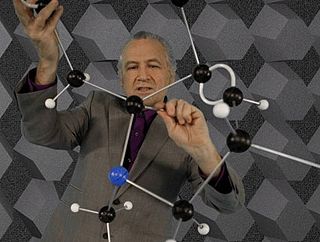
Gary Hill is an American artist who lives and works in Seattle, Washington. Often viewed as one of the foundational artists in video art, based on the single-channel work and video- and sound-based installations of the 1970s and 1980s, he in fact began working in metal sculpture in the late 1960s. Today he is best known for internationally exhibited installations and performance art, concerned as much with innovative language as with technology, and for continuing work in a broad range of media. His longtime work with intermedia explores an array of issues ranging from the physicality of language, synesthesia and perceptual conundrums to ontological space and viewer interactivity. The recipient of many awards, his influential work has been exhibited in most major contemporary art museums worldwide.
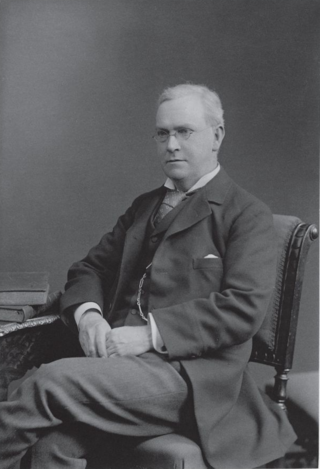
Sir Horace Lamb was a British applied mathematician and author of several influential texts on classical physics, among them Hydrodynamics (1895) and Dynamical Theory of Sound (1910). Both of these books remain in print. The word vorticity was invented by Lamb in 1916.

Lamb is an English electronic music duo from Manchester, whose music is influenced by trip hop, drum and bass and jazz. The duo consists of producer Andy Barlow and singer-songwriter Lou Rhodes. They achieved commercial success with the hit singles "Górecki" and "Gabriel".
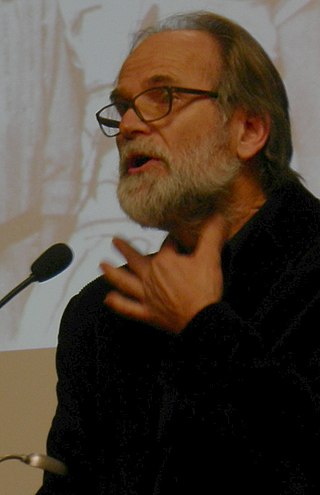
Trimpin is a German born kinetic sculptor, sound artist, and musician currently living in Seattle and Tieton, Washington.

Chantal Francesca Passamonte, known professionally as Mira Calix, was a South African-born, British-based audio and visual artist and musician signed to Warp Records.

Paul Schütze is an Australian artist resident in London. Over thirty years his work has spanned composition, performance, installation, video, printmaking and photography.

Telecommunications engineering is a subfield of electronics engineering which seeks to design and devise systems of communication at a distance. The work ranges from basic circuit design to strategic mass developments. A telecommunication engineer is responsible for designing and overseeing the installation of telecommunications equipment and facilities, such as complex electronic switching systems, and other plain old telephone service facilities, optical fiber cabling, IP networks, and microwave transmission systems. Telecommunications engineering also overlaps with broadcast engineering.
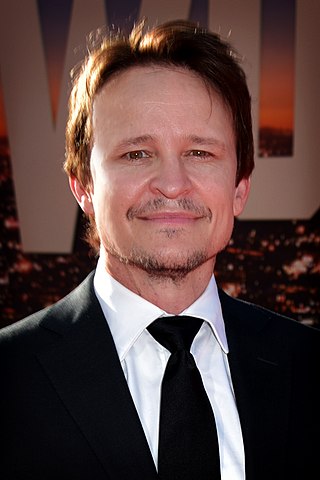
Damon Herriman is an Australian actor. He is best known for his roles as Dewey Crowe on the FX neo-western crime series Justified (2010–15), and Romeo on the Starz drama miniseries Flesh and Bone (2015). He is also known for having played Charles Manson twice, first on the second season of the Netflix psychological crime thriller series Mindhunter, and later in the comedy drama film Once Upon a Time in Hollywood.
Sumitomo Electric Industries, Ltd. is a manufacturer of electric wire and optical fiber cables. Its headquarters are in Chūō-ku, Osaka, Japan. The company's shares are listed in the first section of the Tokyo, Nagoya Stock Exchanges, and the Fukuoka Stock Exchange. In the period ending March 2021, the company reported consolidated sales of US$26,5 billion.
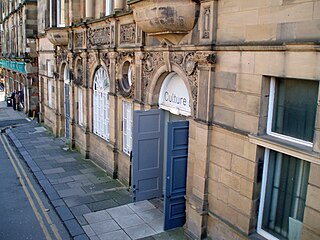
Culture Lab is an interdisciplinary research facility at Newcastle University, Newcastle upon Tyne, UK.
Daniel Paluska is an American artist and roboticist known for his computer art installations and collaborations. Paluska is originally from Michigan,. He received both his BS and master's degrees in Mechanical Engineering from MIT where he worked on robotic legs. His work on walking robotics was featured in a cover article of Wired Magazine in September, 2000. Paluska is currently the VP of Robotics at The Pickle Robot Company, a startup he co-founded in 2018.

Eli Keszler is an American percussionist, composer, and visual artist based in New York City. Known for his complex and intricate style of drumming, as well creating sound installations involving piano wire and other mechanisms to accompany his live performances, his shows have involved visual elements such as Keszler's drawings, diagrams, screen prints, and writings. In 2012, Pitchfork wrote that "Keszler deserves recent attention for his large-scale sound art installations, which not only force musical ideas to interact with an acoustic environment but, in turn, for flesh-and-bone musicians to interact with both of them."
Deniz Kurtel is a Turkish installation artist and electronic musician. She specializes in creating interactive sculptures featuring LED lights and mirrors and has participated in various festivals, exhibitions, and design weeks around the globe. Starting with her debut album in 2009, “Music Watching Over Me,” she has regularly toured as a musician. Her song "The L Word" made NPR's Favorite Songs of 2011. Working both in Berlin and Brooklyn, she is in the process of further integrating her art and light installations into her live performances.
Cevdet Erek is a Turkish visual artist and musician living and working in Istanbul, Turkey. He is known for combining sound, rhythm and architecture to create installations, videos, objects and performances characterized by site specificity. Cevdet Erek was the recipient of the Nam Jun Paik Award in 2012 and represented Turkey at the 57th International Art Exhibition - La Biennale di Venezia in 2017.
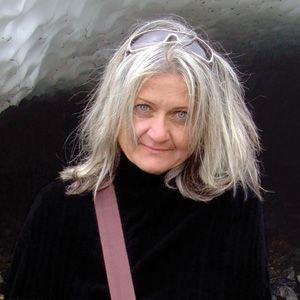
Kartz Ucci was a multidisciplinary contemporary artist and educator working with sculpture, installation, text, and expanded media.
References
- ↑ "Australia Adlib - Wire Music". www.abc.net.au. Retrieved 1 February 2017.